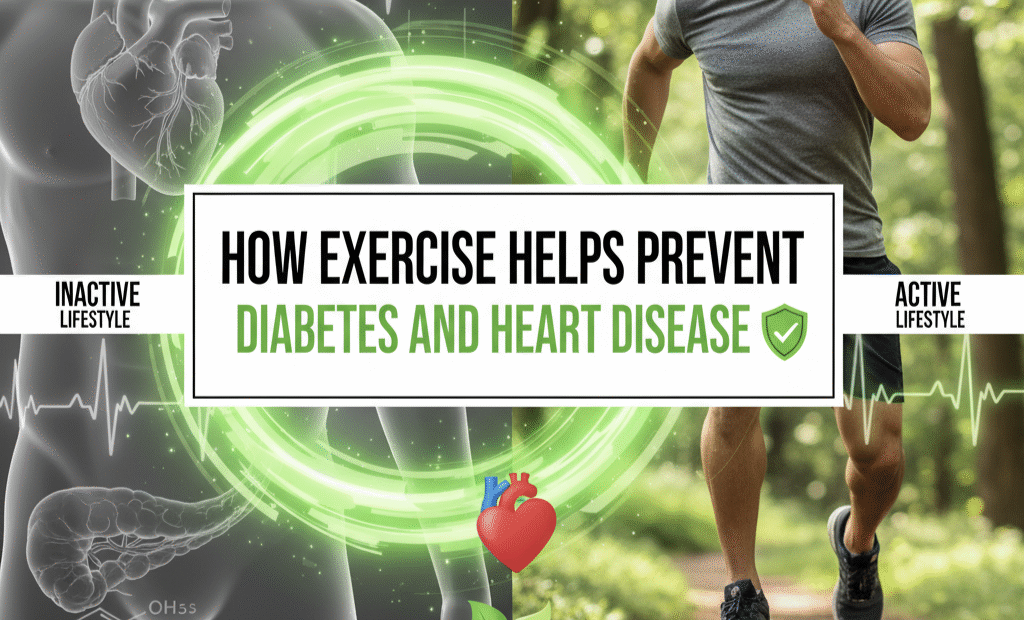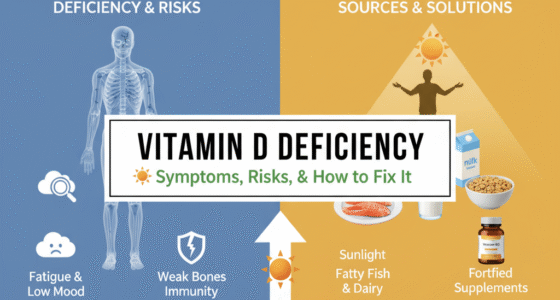Exercise is one of the most powerful tools we have to protect ourselves against chronic illnesses like type 2 diabetes and heart disease. Both conditions are among the leading causes of death worldwide, and lifestyle choices play a critical role in their prevention. In this article, we will explore how physical activity reduces your risk, the science behind its effectiveness, and practical ways to integrate exercise into your daily routine.
Why Diabetes and Heart Disease Are Connected
Type 2 diabetes and cardiovascular disease (CVD) are closely linked. High blood sugar damages blood vessels over time, increasing the risk of heart attack, stroke, and hypertension. Similarly, being overweight, sedentary, and having poor metabolic health increases the likelihood of developing both conditions. That’s where exercise comes in — it improves insulin sensitivity, lowers blood pressure, and strengthens your heart.
The Science: How Exercise Helps Prevent Diabetes
- Improves Insulin Sensitivity: When you exercise, your muscles use glucose for energy, lowering blood sugar levels and reducing insulin resistance.
- Reduces Body Fat: Excess body fat, especially around the abdomen, contributes to insulin resistance. Exercise helps burn fat and regulate weight.
- Boosts Metabolism: Both aerobic and strength training increase your resting metabolic rate, making it easier to manage blood sugar.
- Decreases Inflammation: Chronic inflammation is a key driver of diabetes, and exercise reduces inflammatory markers in the body.
The Science: How Exercise Helps Prevent Heart Disease
- Lowers Blood Pressure: Regular physical activity helps your blood vessels relax, reducing hypertension.
- Strengthens the Heart Muscle: Aerobic exercise like walking, cycling, and swimming improves cardiovascular endurance.
- Reduces Bad Cholesterol: Exercise lowers LDL (bad cholesterol) and raises HDL (good cholesterol).
- Improves Circulation: Physical activity enhances blood flow, reducing the risk of arterial blockages.
Best Types of Exercise for Prevention
- Aerobic Exercise: Walking, jogging, cycling, swimming — at least 150 minutes per week.
- Strength Training: Lifting weights or bodyweight exercises 2–3 times per week to build lean muscle.
- Flexibility and Balance: Yoga, Pilates, and stretching improve overall mobility and reduce injury risk.
- High-Intensity Interval Training (HIIT): Short bursts of intense activity followed by rest improve both cardiovascular and metabolic health.
Practical Tips to Stay Consistent
Consistency is more important than intensity when it comes to preventing chronic illness. Here are tips to help you stay active:
- Start with small daily walks, even 10 minutes after meals.
- Use stairs instead of elevators to sneak in exercise.
- Schedule workouts like meetings — non-negotiable.
- Mix it up to prevent boredom — alternate cardio, strength, and stretching.
- Find an accountability partner or join a fitness group.
Other Lifestyle Factors That Support Prevention
Exercise is crucial, but it works best when combined with other healthy habits:
- Healthy Diet: Prioritize whole foods, fiber-rich vegetables, lean protein, and healthy fats.
- Quality Sleep: Aim for 7–9 hours per night to regulate hormones and recovery.
- Stress Management: Chronic stress raises blood sugar and blood pressure — try meditation or deep breathing.
- No Smoking & Limited Alcohol: Both significantly increase the risk of heart disease.
Conclusion
Preventing diabetes and heart disease doesn’t require extreme measures — it starts with small, consistent steps. Regular exercise improves blood sugar regulation, strengthens the heart, reduces body fat, and enhances overall health. By pairing physical activity with a balanced diet, stress management, and proper sleep, you can dramatically reduce your risk of developing these chronic conditions. Remember, your health is an investment, and exercise is one of the best long-term strategies to protect it.









